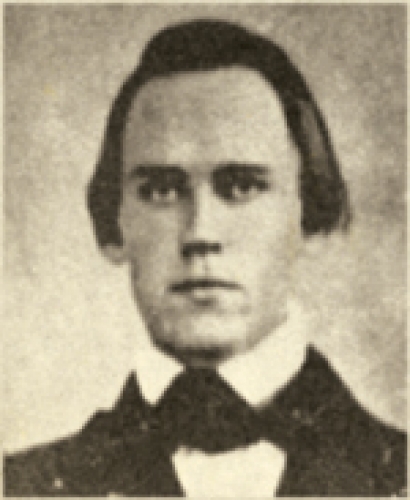The Making of a Confederate: Walter Lenoir’s Civil War. By William L. Barney. Oxford University Press, 272 pages, $12.95.
In 1860, just before the Civil War began, Walter Lenoir was straddling a lot of fences. A lawyer who thought he might be happier on a farm, a slaveholder who planned to move to a free state, a well-to-do Southerner who wanted North Carolina to stay neutral if war came, Walter didn’t fit the stereotype of a member of the South’s landed class.
That’s why historian William Barney wanted to tell about the Civil War from Walter’s perspective. “Walter Lenoir’s South lies outside the South of the popular imagination,” Barney writes.
North Carolinians today recognize the name Lenoir from the city of Lenoir near the family home in Caldwell County, and from Lenoir County, North Carolina. Both are named after the Lenoir family patriarch, William, a Revolutionary War general and later a North Carolina politician and member of UNC’s first Board of Trustees.
Living in the foothills of the Blue Ridge Mountains, William’s descendents were set apart from many Southerners both geographically and ideologically. Walter and his family were prodevelopment Whigs. When the party fractured along the Mason-Dixon line — antislavery Republicans in the North versus Southerners who would come to support the Confederacy — the Lenoirs at first stayed Whig and pro-Union.
Before the Civil War, the Lenoirs’ politics were actually the majority view in North Carolina’s western counties. Unlike tobacco and rice planters in eastern North Carolina and cotton planters in the Lower South, most white people in the mountain region owned few or no slaves. “Families like the Lenoirs tried to stake out a middle ground between those they denounced as extremists in both sections — ambitious, hotheaded radicals in the Lower South, and the meddling, fanatical abolitionists in the North,” Barney writes.
As a student at UNC, Lenoir was dismayed that other students drank and stole the horses of people attending revivals down the street. Image: Happy Valley, History and Genealogy, North Carolina Collection, UNC-Chapel Hill
The family’s ambivalence about slavery comes across in hints scattered through their letters. Walter bluntly advised his brother Rufus to buy slaves because they were likely to gain in value. Yet in other letters, Walter said the institution of slavery had “defects of the greatest character” and was “wrong in the abstract.” When Walter’s mother learned that one of her sons had sold a slave, she reminded him that he had an obligation to keep his slaves unless they behaved badly or wanted to be sold.
Walter wrote of “the evil of being the master of slaves.” He wanted to live in a free state, and went to Minnesota to scout for land. But growing tensions convinced him to stay near home and advocate for moderation. As late as March 1861, Walter hoped that North Carolina, Maryland, Virginia, and other middle states might form a central confederacy that could eventually make peace between the North and the South.
In April, when Lincoln called up the state militias, Walter and other Southerners who had wanted to avoid secession began to see the conflict in a new way. By gathering troops, Lincoln showed that he was ready to use force against states that seceded. That realization changed everything for Walter. He had tried his best to prevent the war. Now it was coming, and he couldn’t stop it. In his mind, the choice became whether he would fight for his homeland.
This account of Walter’s life helps us understand not just one man, but other Southerners who were reluctant to secede. “If they’d had their druthers, they would have ended slavery, but they figured there wasn’t a lot they could do,” Barney says. “Walter was more than happy that the war was going to bring an end to slavery. It was going to solve the problem for him.”
William Barney is a professor of history in the College of Arts and Sciences.


